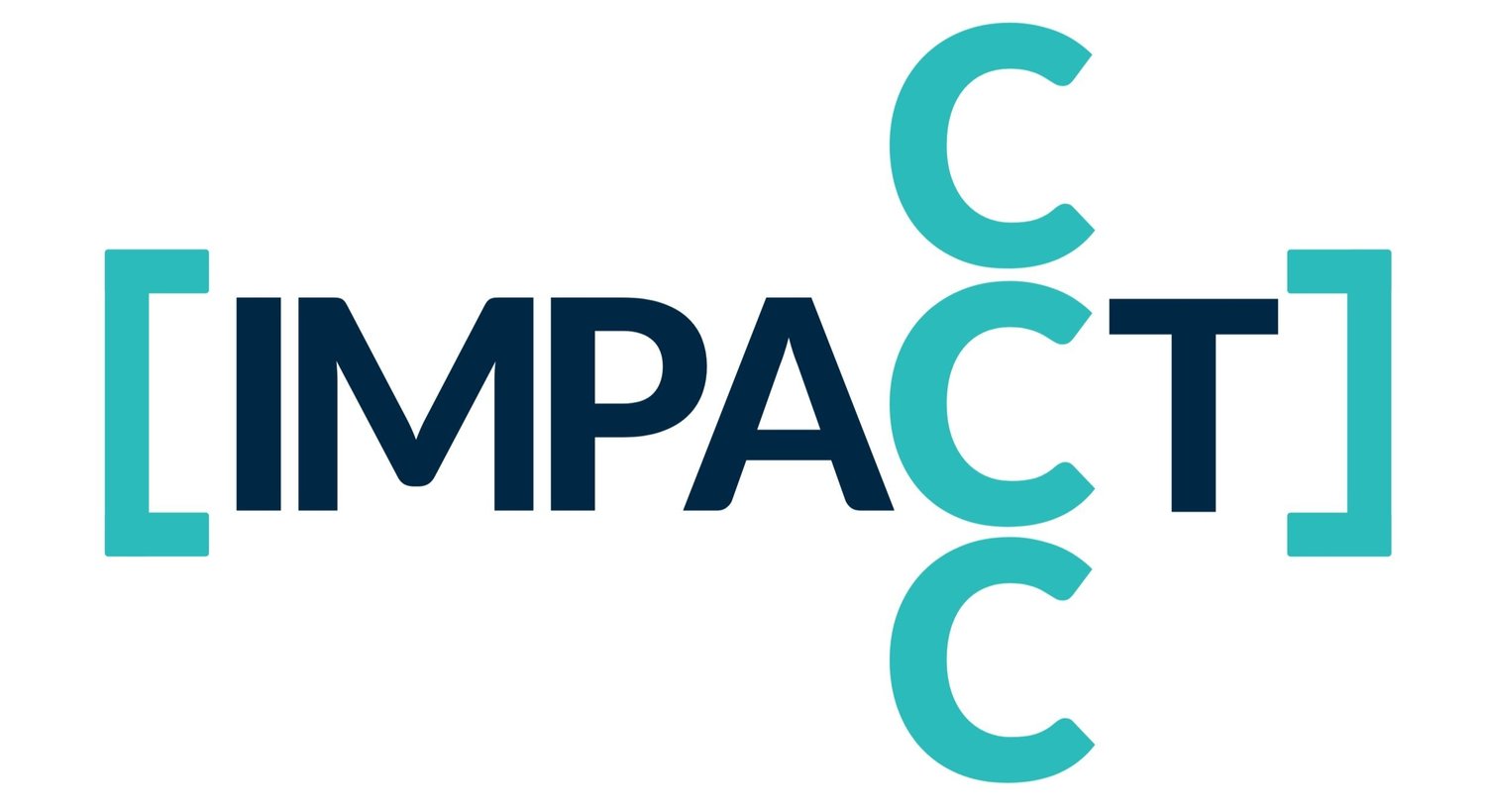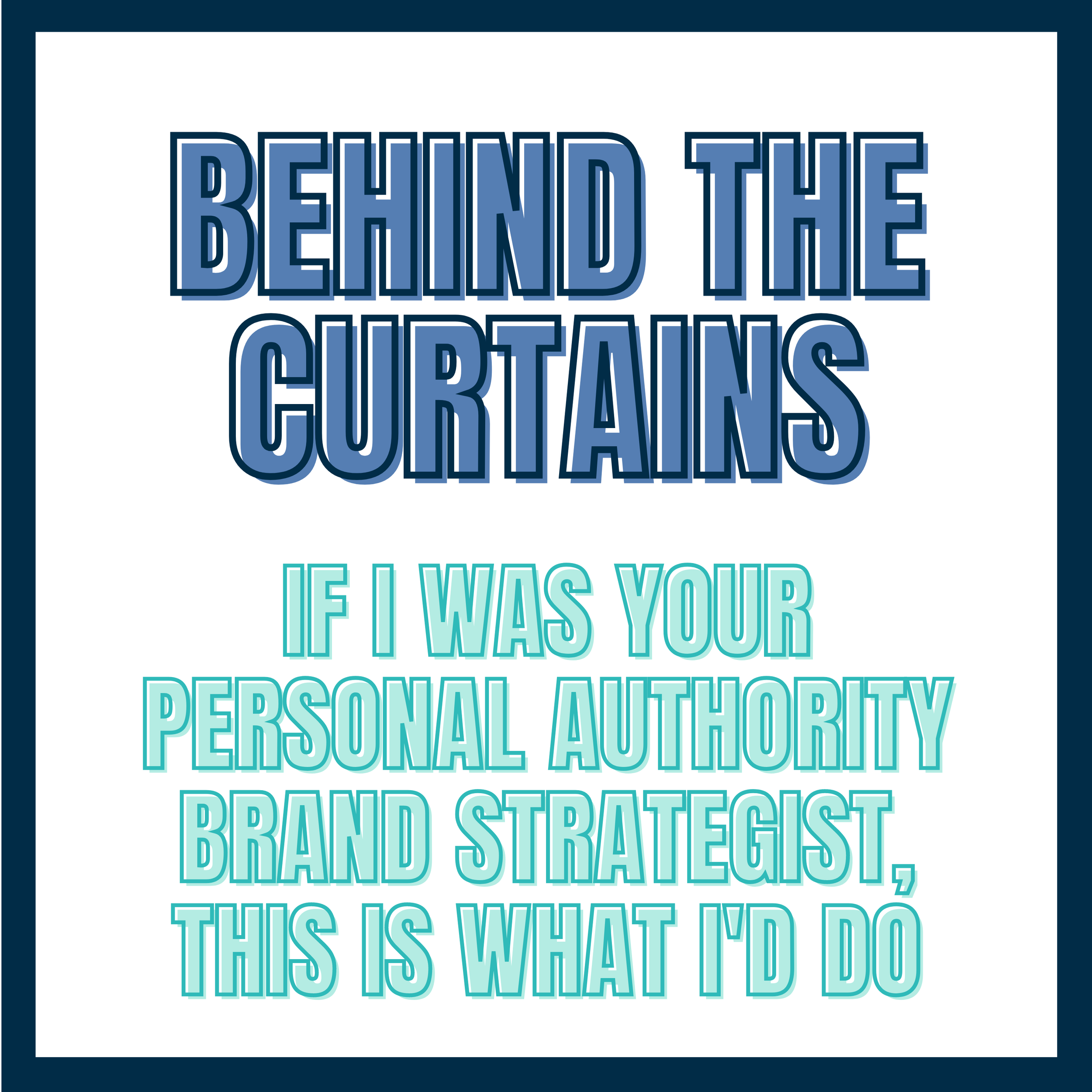Behind The Curtains: If I Was Your Personal Authority Brand Strategist, This Is What I'd Do
Visual and verbal brand identity, developing and monetizing your own IP, protecting your reputation, and everything in between is part of becoming the trusted authority. With that said, since we know that it can all be quite overwhelming and confusing as to where to focus on when building your authority brand and presence is a priority in 2024, this blog post will give you a good understanding what it is that we do at our core. I share with you the five first and significant areas I work on for my clients.
Full disclosure: this isn’t a regulated industry so there is not a cookie-cutter approach and depending on the background and specialization of a strategist, you may find different focuses. With that said, there are foundations that should and need to be covered before you get into any of the marketing assets that most people confuse it with.
Since your personal brand is your reputation, we have to firstly know where you are in terms of your own perception, other people’s perception and of course, where you want to be. This is one of the most compelling reasons for me that I have specialized in it because strategy requires desire to change and when I work with my clients, we are building the future rather than just let it happen to us. It may be by becoming more of who they are already and simply amplifying their influence or by establishing a new path for them.
In either case - the first step is unsexy but essential and that is:
Define Your Brand Promise and Performance
It starts by clearly articulating what makes you you, including all the strengths, weaknesses, traits, and quirkinesses that come with you and results you’ve achieved so far. This is also when we dive deeper and clarify what it actually is that you want to be known for, out of all the expertise, experience, and skills you’ve acquired over the years. This is your brand promise. Once we know that, we then look into what you can deliver and produce with this package to others, meaning: how can we increase your relevancy in terms of messaging based on what you offer. This is what we call your value proposition. Now to differentiate yourself from everyone else in this category, we are defining your brand positioning, meaning: what makes you different from everyone else with similar background who is targeting a similar role/specialization or offer. This is where I bring my Trusted Authority framework of connecting two worlds: two worlds that are relevant to you and your decision-maker. What is unique about your background and also future interests that we can combine in a way that’s relevant, maybe even novel and interesting because it’s missing at the moment for your decision-maker. This is how you can create an economy of one because no one else can possibly have the exact same level of experience, expertise, and stories that go with it to tell. And this is a big component in the equation of building/enhancing or changing your reputation. Brand promise needs to meet performance, aka the results and the benefits you can provide for your audience as this is what builds trust and credibility.
Develop Your Signature Framework
You’ve heard me banging on about signature frameworks for quite some time now, and let’s be honest- I won’t slow down to hone this message anytime soon either for a couple of reasons: It’s the one big differentiator between an expert and an authority because it's the foundation for you to be able to explain not only what you do but how you go about it. It’s the quality insurance to actually deliver results because you’re following a proven method backed by your previous experience, expertise, and externally tried and tested tools. One common mistake about people’s signature framework is that their IP needs to be completely unique, which is impossible.
What a framework allows, though, is the shortcut to the result as just trying and testing and seeing what works and what doesn’t cost valuable time and with that money. Plus: having a framework also allows you to scale your IP beyond you delivering it, and that is what truly can create a legacy. You can develop templates, tools, quizzes, etc., around it, which can be used beyond you.
The other reason why I won’t stop talking about frameworks is the increase of corporate dropouts, all in the pursuit of setting up their own consultancy or advisory. Trust me - I’m all for it because this is what I was excited about doing myself 7 years ago where it wasn’t that competitive.
Having a proper framework is again what helps with the predictability of results but also more credibility due to documented and transparent processes, systems, assets, and workflows. And in the end, the more mainstream you can be and deliver results as a knowledge professional, the more competitive whilst profitable you are in the market.
Visual and Verbal Identity Development
Once we have done the groundwork, it’s time for the more visible and externally facing activities. This is where your brand comes to life, visually and verbally. It starts with defining the brand colors, fonts but also the tone & voice.
Everything is captured in a personal brand style guide that our clients get which they can then use when they work with their own designers on any marketing assets. Most of our clients work with us on also developing their marketing assets which include professional photography, social media content creation (captions and branded creative) as well as speaker and media kits which I come back to in a second.
Let’s stay with photography for a second because it’s an important part to do quite early on in the journey as the marketing assets that follow from here are based on that. I’m a big fan of professional personal brand photography which again, goes beyond the traditional headshots in corporate attire. This is so early 2000, and no one resonates with that anymore. People want to see you in your habitat and workspace but also in a visually compelling way.
While everyone says ‘just be authentic’, I don’t buy into that because the bars of what is visually aesthetically accepted and appealing have been lifted. This is why having a proper shoot with proper lighting, props, clothes, and poses are so helpful.
We bring the best out of our clients and enhance what they do visually. When we have our shoot days, I always prepare for every client for their own poses, set-ups, and environments to mimic their natural environment as much as possible while making it visually pleasing. Plus- they should also be very versatile as we use them for social media (which can be a little more casual) as well as speaker and media kits and of course, websites etc which need to be more professional. A good personal brand shoot should capture all of the brand personas and situations the person would be exposed to.
4. Visibility and Network Building Strategies
Once we have all the assets, it’s time to go out and build your external presence and profile. We do that through a variety of strategies and tactics, depending on the client’s goals and personality type. And again - this is where frameworks come in because it allows you to be flexible within a proven frame and you build a tool kit which you can pick and choose, depending on who you work with. So we have two strategies; internal and external relationship and network building as both are important but again, depending on the ideal outcome, one usually outweighs the other for the time being before it can be a more equal split of efforts. Internal profile and presence building is perfect for when you are either the leader (either recently appointed or when the team has grown significantly) to build a stronger culture, more connected teams or trust because it may have been damaged. We also use it for preparing for getting a promotion or transition into another role/ department. If you don’t have internal allies and supporters, maybe even sponsors, it’s going to be quite hard to get the buy-in you need to make things happen.
External profile and presence building activities include your online and offline (beyond the company) footprint. We always aim to leverage various platforms and channels to showcase our clients’ expertise, may it be through consistent LinkedIn posts, pitching and speaking at industry events, conferences, and community gatherings as well as contributing to publications and media exposure.
5. Consistent Brand Communication and Delivery:
Ensure consistency in your brand communication across all touchpoints, including your website, social media profiles, presentations, and interactions with clients or partners. Deliver on your brand promise consistently by providing exceptional value, delivering high-quality work, and maintaining integrity in all your dealings. Consistency in both communication and delivery reinforces your brand reputation and fosters trust and loyalty among your audience.
These five foundational steps lay the groundwork for building a strong and influential authority brand that resonates with your target audience, establishes your credibility, and positions you as a trusted leader in your field.
___________
Want to become the Trusted Authority in your field by building and monetising your expertise?
Here are a few ways you can get started with my resources:
1.) Get your copy of my my book - Trusted Authority - From Technical Expert To Trusted Authority
2.) Book your complimentary 20min Strategy Session
3.) Connect with Petra Zink on LinkedIn
Check out all show notes and further resources over at https://www.impaccct.com

